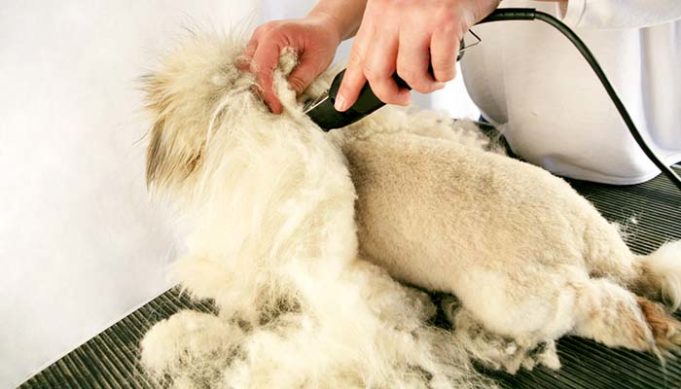Pet owners are often confused about the grooming of double coated breeds. Huskies, Golden Retrievers, Samoyeds and German Shepherd dogs are just some of the dogs that have a double coat which consists of thick coat. Their fur can be longer around the neck, buttocks and tail, creating waves on the lateral parts of the limbs.
Double coated dogs with this type of fur require more frequent brushing and sometimes trimming to remove the undercoat, which is the main reason for shedding. If you decide that shaving your dog is necessary for some reason, and you wish to do it yourself, there are a few things you must keep in mind.
A word of caution
In general, you should NOT shave a double coated dog. Some owners who you live in a warmer climate, assume that by shaving their doable coated dog they will help him to better take to the heat. This is incorrect. This coat is the “protective armor” for the dog. Shaving it will destroy the natural structure and oils of the animal's coat, exposing them to sun's UV rays in summer or cold in winter. It also won't grow back the same.
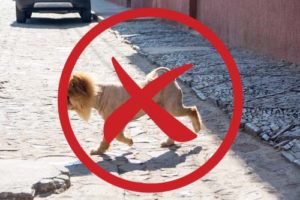
The hair of the dogs adapts to the seasons. That's why the most consistent hair loss from your pet comes in the spring and fall. In winter, the winter fur becomes thicker and denser, while in summer, the hair bulb shrinks to let the air circulate and cool the dog. In both cases, the role of the hair is a role of insulation (against the cold for the winter and against the heat for the summer). Thus, there's rarely any reason to shave a dog.
That said, if you need to shave your dog for some reason, the first step would be to let a professional groomer do it. If you cannot afford a groomer's service and want to do this yourself, make sure to follow safety rules and do it correctly.
1. Prepare the Dog for Shaving
Begin by getting your dog accustomed to the sound of grooming tools for several days before actually going through with the shaving. If you're using pet clippers, follow these tips on how to keep the dog calm around the buzzing sound of the machine.
Place the clippers near the dog, approach his body without touching him, and tell him reassuring words to keep him calm. Let your pup smell and investigate the device. You can only consider shaving when you are sure the animal understands that it will not hurt him. Rewards, when he stays calm, will help you reassure the animal.
2. Have the Right Equipment
It’s essential that you have the right equipment for shaving and grooming your dog on hand. Do not think for a single second that shaving with a tool that is meant for humans is fine, because it's highly unsuitable for the thick hair of the dog. More high quality professional dog clippers will likely to be used for a double coated dog due to their thick fur.
3. Plan in Advance
Shaving a dog requires there to be a planning and preparation stage. If you are concerned because the dog is restless, plan to have a second person around. If the dog is really anxious, it's better to postpone the shaving until the dog is fully accustomed to the shaver and it doesn’t give him anxiety.
4. Be Thorough
Before you start, make sure there are no small pieces of twigs or leaves stuck in the dog's fur because they could damage the trimmer. Ensure this by brushing and combing the dog’s hair with a dense comb that will get rid of all the tangles and matted hair along with anything that may cause the shaver to malfunction.
5. Go Slow
If this is your first time shaving a double coated dog, start by carefully going through the hair with a trimmer before finishing with scissors. The most important thing is to stay calm and be gentle, not to alarm the dog, and not to take off too much hair. Know in advance where and how you're going to shave – this is not the time to improvise.
6. Don’t Overdo It
It’s better to do little rather than too much. Hastiness is never rewarded when you are a beginner at dog grooming. Take your time. At first, try to shave the hair evenly. You can always go back if you think the dog's hair is still too long and cut some more.
7. Avoid Shaving Elderly Dogs
We all know the saying “It’s just hair, it will always grow back.” Sometimes it will, but other times it won’t. In double coated dogs, their fur will not grow back the same (which is why it's inadvisable to shave them). With older dogs in particular, it's even less likely that the top coat of the hair will regrow as you hope it would.
This will leave the animal with the undercoat only, giving it an uneven and scruffy look. Not only will it look unappealing, but you may end up having to shave it permanently, and from there, you strip them of their natural ability to protect themselves; they no longer have the protection of oils and coat insulation.
RELATED: How to Groom a Dog – All-in-One Guide for Beginners
The 5 Steps to Shaving a Double Coated Dog
Once you know that your pet is fine around clippers and isn't too anxious, and you've put the dog, the shaving tools, scissors, comb and everything else you need on a table, you are ready to start.
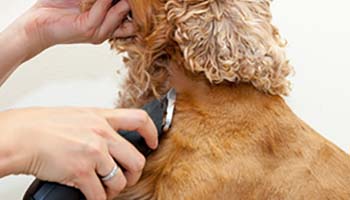
1. Hold your trimmer firmly in one hand, and start near the neck if the dog is calm. Otherwise, going for the excessive hair on the back and the top of the head first will do the trick. Don’t forget to stretch the skin on the neck to get to all the not-so-easily-accessible crevices.
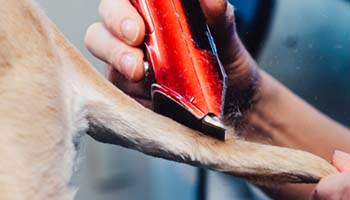
2. In the second part, once the neck is shaved, go to the butt and the back, and the tail if you're shaving that too. Make sure always to keep one hand resting on the back or the shoulders of the dog to keep the animal motionless.
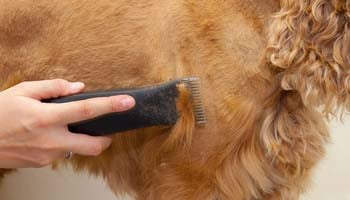
3. To shave the sides and the belly, it is necessary to start by finding the nipples to circumvent them and to avoid hurting the dog. The trimmer must be placed flat, parallel to the skin and the movement goes in the direction of the hair.
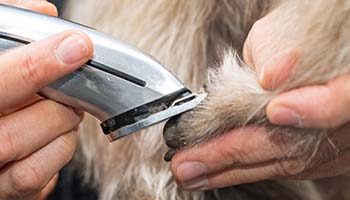
4. It’s easier to shave the legs when they are extended. They must be held firmly, and you have to be careful not to injure the skin on the joints. Unless you have a specific trimmer extension for detailed work, it's better to finish the hair between the paws with scissors. They should be held tight with your fingers, and the shaver should be carefully moved to avoid pinching the skin.
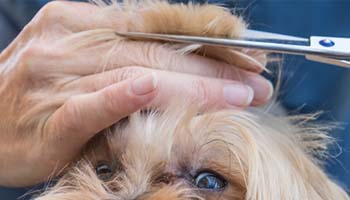
5. For areas where it's necessary to cut very short, such as the throat, the face, the abdomen and the inside of the thighs in some dogs, it is required to use a specialized narrow extension for the trimmer and to approach cutting the hair very delicately. Often it's best to use just scissors alone.
To help your dog to withstand the weather conditions better and make him as comfortable as possible, the first thing is to NOT shave his coat. Next to that, it’s best to try and shave the undercoat (dead hair) that has not yet shed even with regular brushing.
There are steps you can follow that will undoubtedly help you with this process, from preparing your pooch for shaving, all the way to choosing the right equipment for the job. However, if you are doubtful of your abilities, a visit to a professional groomer who has the appropriate techniques and can do this job better than you is recommended. Know that a large part of the hair can be taken off with a good bath, brushing and drying which will undoubtedly make your job easier (and possibly making shaving the dog unnecessary).
READ NEXT: 8 Tips on Buying and Safely Using Dog Hair Clippers


